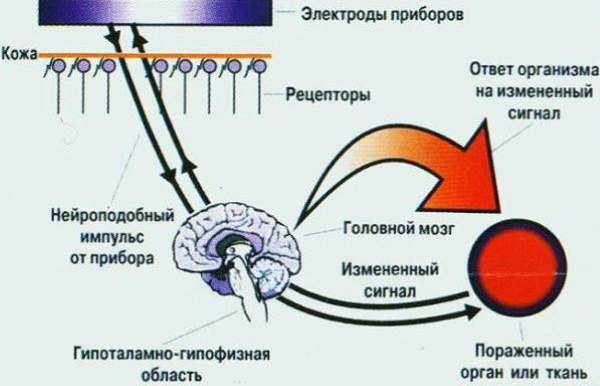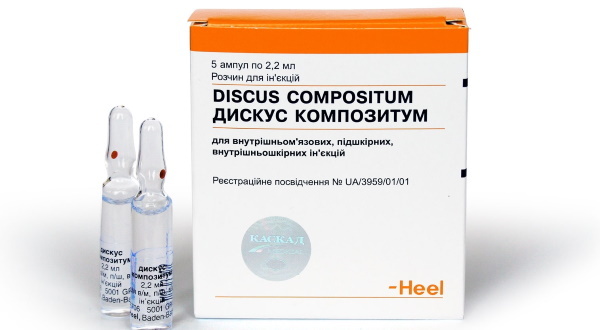HA with extravascular (intracellular) destruction has hereditary nature. The destruction of red blood cells takes place more often in the spleen macrophages, at least in the bone marrow, liver and lymph nodes. Probably trio: anemia, inflammation of the spleen and jaundice. GA are divided into eritrotsitopatii, eritrotsitofermentopatii and hemoglobinopathies.

What it is?
Hemolytic anemia - group name is quite rare diseases, common feature which is enhanced destruction erythrocytes that makes, on the one hand, anemia and increased formation of decomposition products of erythrocytes, on the other hand - reinforced reactively erythropoiesis.
A little about red blood cells
Erythrocytes, or red blood cells - red blood cells is the main function of which is to transport to the organs and tissues of oxygen.
- Shaped red blood cells in the bone marrow where they mature forms go into the bloodstream and circulate throughout the body. The life span of red blood cells is 100-120 days. Every day some of them, or about 1%, dies and is replaced by the same number of new cells.
- If the lifespan of red blood cells is reduced, in the peripheral blood and in the spleen of their destroyed more than time to mature in the bone marrow - the equilibrium is disturbed. The body reacts to the reduction of red blood cells in the blood increased synthesis of bone marrow, the latter activity significantly - by 6-8 times - increases.
As a result, the blood is determined by the high number of young red blood cell progenitor cells - reticulocytes. Destruction of erythrocytes with release of hemoglobin in the blood plasma is called hemolysis.
Causes of
Modern science does not provide for the division of hemolytic anemia, depending on where the destruction of red blood cells. Mostly focusing on the etiology and pathogenesis of the disease and on the basis of these principles, the disease is divided into two main classes:
- Acquired forms of HA that are classified according to factor damaging the erythrocytes and the caller anemia (antibodies hemolytic poisons, mechanical damage).
- Hereditary hemolytic anemia - are classified on the basis of the localization of the genetic defect of red blood cells, because of which the red blood cells become defective, functionally unstable and unable to live allotted to them time. Among the hereditary GA appear: membranopatii (microspherocytosis, elliptocytosis) enzyme defects (deficiency of G-6-FDR), hemoglobinopathies (sickle cell anemia, thalassemia).
A large number of GA hits the acquired forms, but among them there are a number options, which, in turn, also have variations due to certain reasons appearance:
- The development of hemolytic anemia can trigger vitamin E deficiency;
- HA develops because of somatic mutations that alter the membrane structure of red blood cells (cold paroxysmal nocturnal hemoglobinuria);
- Progression of the disease is caused by the influence of erythrocytic antibodies produced self antigenic structures erythrocytes (Autoimmune - autoimmune hemolytic anemia) or izoantitel caught in blood from outside (isoimmune - hemolytic disease neonates);
- Negative effects on membrane structure often have a variety of chemicals, foreign to the human body (organic acid hemolytic poisons, salts of heavy metals, etc.).;
- Damage to the membranes of red blood cells can result in mechanical effects of artificial heart valves or injury to red blood cells in capillary vessels stop walking and running (sustainer hemoglobinuria);
- This parasite is Plasmodium falciparum, a human blood penetrating through the bite of the mosquito (female) genus Anopheles (malaria mosquito), is dangerous in terms of the occurrence of hemolytic anemia, as a symptom of "marsh fever. "
The most common form among the acquired GA is autoimmune hemolytic anemia (AIHA).

Classification
All hemolytic anemias are classified according to this principle.
Acquired forms - develop under some influence of any external factors that have a devastating effect on red blood cells.
- Autoimmune hemolytic anemia;
- Anemia caused by mechanical damage or erythrocyte provoking parasitic, toxic effects of substances.
Hereditary or congenital forms - are the result of the impact on the life of red blood cells genetically determined abnormalities.
- Membranopatii;
- Hemoglobinopathies (sickle-cell anemia, thalassemia etc.);
- Eritrotsitopatii (anemia Minkowski-Chauffard);
- Fermentopathy.
symptoms
Hemolytic anemia is expressed manifested in times of crisis. When slow process lubricated symptoms. Determine the specific type of pathology is possible only by means of additional diagnostics.
The main symptoms include:
| anemia syndrome | It manifested in the pallor of the skin, mucous membranes. Accompanied by a lack of oxygen in the form of symptoms of shortness of breath, dizziness, weakness, palpitation. |
| jaundice syndrome | increase in bilirubin concentration as a product of the decay of erythrocytes, expressed yellowing of the skin, change in the color of urine. |
| hepatosplenomegaly | splenomegaly occurs due to intensive hemolysis, can reach a considerable size. The liver is less subject to change. But in some cases there is an increase and it is accompanied by weight in the upper quadrant. |
Hemolytic Anemia may be manifested in the form of additional symptoms:
- abdominal pain;
- loose stools;
- painful bone;
- elevated temperature;
- chest pain and kidney area.
Even if there are only 2 or 3 of the following symptoms, it should serve as an occasion for a medical examination. After bilirubin toxic by prolonged exposure to tissues and organs can impair their function.
clinical forms
The clinical manifestations are several common forms of hemolytic anemia:
- Autoimmune anemia. It acquired the disease is accompanied by extensive lesions of blood cells. The main cause of pathology - antibody formation in red cells that provoke hemolysis. Autoimmune hemolytic anemia observed when immune cells perceive the red blood cells of the body as foreign agents and strive to destroy them. Adverse prognosis of such disease requires blood transfusion or bone marrow transplantation.
- Anemia Minkowski-Chauffard (hereditary microspherocytosis) is characterized by abnormal erythrocyte membrane permeability, through which sodium ions. The disease is an autosomal dominant hereditary. Development of undulating: the alternation of periods of stable and hemolytic crisis. Main features: reducing the osmotic resistance of red blood cells, the predominance of the modified red blood cells - microspherocytes, reticulocytosis. When the complex course of the disease require surgery (removal of the spleen).
- Thalassemia. If the physician determines the congenital disease thalassemia blood, it is a consequence of impaired production of hemoglobin in the blood chemistry. Anemia in the absence of timely treatment only progresses, symptoms increase, make the patient an invalid. This disease is congenital in origin, requires delivery of complex analyzes, detailed clinical examination of the patient, the treatment to maintain remission.
- Porphyria are inherited form of the disease and are caused by a violation of the formation of porphyrins - the components of hemoglobin. The first sign - hypochromia gradually manifested iron deposition, change in the shape of red blood cells in the bone marrow appearing sideroblasts. Porphyria, and may have acquired the character at toxic poisoning. Treatment is carried out by introducing glucose and hematite.
- Sickle cell anemia is the most common form of hemoglobinopathies. A characteristic sign: the red blood cells take the shape of a crescent, which leads to a jam in the capillaries, leading to thrombosis. Hemolytic crises are accompanied by the release of the black-colored urine with traces of blood, a significant decrease in hemoglobin in the blood fever. In the bone marrow revealed a large content erythrokaryocytes. When treating a patient is administered an increased amount of liquid oxygen therapy is carried out and assigned to antibiotics.
Diagnostics
In diagnosing hemolytic anemias apply common clinical blood count (anemia is detected and changes the sizes and shapes red blood cells), blood chemistry (including serum bilirubin, ALT, LDH), serum haptoglobin, and hemosiderin hemoglobin urine. To confirm the diagnosis can apply the bone marrow puncture (active processes erythropoiesis determined in biopsy).
Most characteristic for active intravascular hemolysis is spherocytosis erythrocytes (if transfusion reactions, hereditary spherocytosis, hemolytic anemia with heat antibodies). There may also shistotsitoz (for intravascular prosthesis, microangiopathies), sickle erythrocytes (sickle cell at anemia) mishenevidnye erythrocytes (in liver pathologies, hemoglobinopathies), nucleated red blood cells and basophils (at high beta tallasemii).
Heinz calf found in unstable hemoglobin, activation of peroxidation, acanthocytes - for anemia with shporovidnymi erythrocytes agglutinated cells - at illness of cold agglutinins.
Treatment for hemolytic anemia
When razvitti hemolytic anemia effective treatment is much more difficult than any other of its species. This is due to the fact that the impact on the triggering mechanism of hemolysis is not always possible. The general plan of medical actions may include:
- Transfusion of washed red blood cells. It is shown at lower rates of red blood to critical numbers;
- The use of folic acid and vitamin B12;
- Transfusion of fresh frozen plasma and human immunoglobulin;
- Introduction of glucocorticoids (dexamethasone, prednisolone, methylprednisolone, kortinef);
- The use of cytotoxic drugs. It is shown only in autoimmune hemolytic anemia;
- Prevention of infectious complications and exacerbations of existing chronic diseases;
- Surgical treatment of splenectomy (removal of the spleen). The method provides a relatively good prognosis for recovery. Not effective for anemia Minkowski-Chauffard and other types of hereditary hemolysis.
Any hemolytic anemia, fighting which started late - a complex problem. It is unacceptable to try to deal with it yourself. Her treatment should be integrated and assigned exclusively qualified person based on a careful examination of the patient.

Acquired hemolytic anemia
The main group of drugs successfully employed in the treatment of acquired anemia include glucocorticoids (prednisolone) are able to completely block the process of hemolysis. But the treatment of such hormones is quite lengthy. For its full effectiveness requires accurately calculated the dosage of the drug. With the ineffectiveness of steroid hormones used cytostatics.
If the cause of hemolytic anemia can not be identified, doctors begin to symptomatic treatment. Usually it is the red blood cell suspension to the patient. Particularly, this method is effective at a low rate of hemoglobin (less than 50) and during periods hemolytic progression.
Congenital or hereditary anemia
Typically, such medical treatment provides only temporary anemia improve the overall condition of the patient but relapses hemolytic crises, unfortunately, it does not prevent the. There will be more efficient surgery.
It means carrying out splenectomy - removal of the spleen. This operation showed 100% efficiency, patients almost completely cured, although the pathological features and erythrocytes are retained. Usually an indication for surgery are bouts of renal colic, myocardial spleen, severe form of anemia or frequently recurring crises.
Complications and prevention
- DIC;
- anemic shock (acute heart failure);
- hemosiderosis internal organs;
- subcapsular fractures, heart attacks spleen, hypersplenism;
- aregeneratorny crisis;
- acute renal failure;
- biliary dyskinesia.
The only possible way to prevent the development of anemia - maintaining a healthy lifestyle, early treatment and prevention of other diseases.



